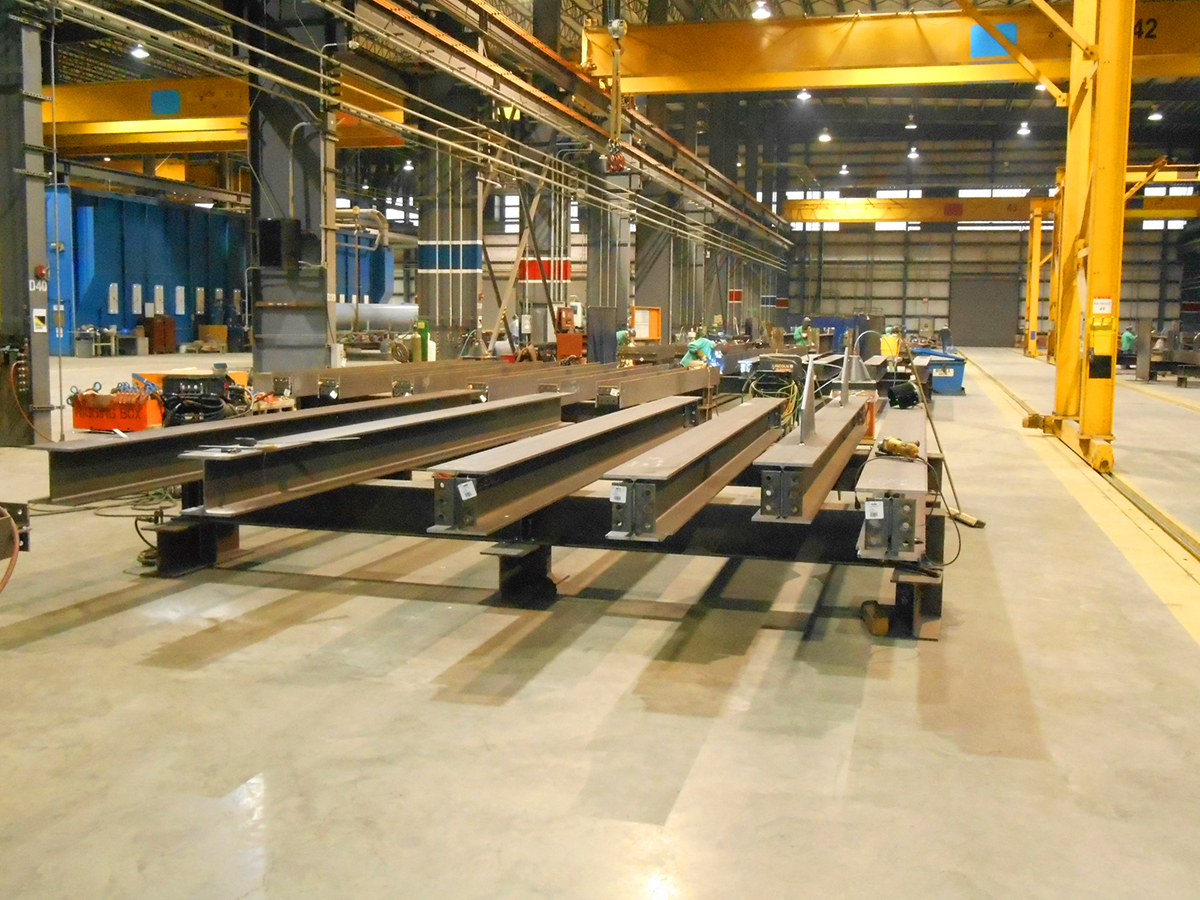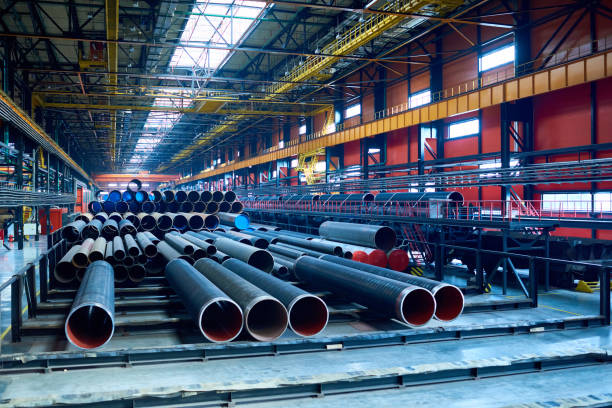Steel Fabrication Melbourne: Workmanship Fulfills Innovation
Steel Fabrication Melbourne: Workmanship Fulfills Innovation
Blog Article
Ingenious Trends in Steel Manufacture: Enhancing Durability and Accuracy
In the world of steel fabrication, the search of sturdiness and precision has led to a wave of innovative trends that are reshaping the sector. From advancements in welding technologies to the assimilation of robot automation in fabrication procedures, the landscape of steel production is developing quickly. High-strength alloy development, paired with the application of 3D modeling and simulation software program, is pressing the borders of what is achievable in terms of architectural stability and accuracy. The expanding emphasis on sustainable practices in steel manufacturing is not just driving performance yet additionally promoting a much more ecologically aware strategy to construction. These fads are not just forming the existing however also preparing for the future of steel fabrication, assuring further enhancements in longevity and accuracy.
Advanced Welding Technologies
In the realm of steel construction, the adoption of sophisticated welding technologies has significantly changed the sector's method to achieving premium top quality and accuracy in structural welds. Advanced welding innovations, such as laser light beam welding and rubbing stir welding, have actually arised as game-changers in the area. Laser beam welding utilizes a focused laser light beam to join steel parts with amazing precision and rate, making it excellent for intricate layouts and slim products. On the various other hand, friction mix welding creates unbelievably strong bonds by mechanically intermixing the molecules of the materials at the joint, getting rid of the requirement for thawing the metal. These innovations provide numerous advantages, consisting of reduced heat-affected zones, marginal distortion, and improved mechanical residential properties in the welded joints. By leveraging these sophisticated welding techniques, steel makers can elevate the longevity, strength, and precision of their structural welds, meeting the significantly requiring requirements of contemporary construction jobs.
Robotic Automation in Construction
Welcoming robot automation has become a foundation of modern steel manufacture techniques, streamlining processes and improving effectiveness throughout the sector. Robotics are revolutionizing the means steel components are produced, offering unequaled precision and rate while reducing human mistake. These automated systems can deal with recurring jobs with regular accuracy, bring about greater quality output.
One key advantage of robotic automation in steel fabrication is the capacity to work all the time without exhaustion, considerably increasing production output. This continual operation lessens downtime and increases project timelines, eventually saving prices for manufacturers. Furthermore, robots can be configured to perform detailed tasks that might be hazardous or challenging for human workers, improving safety in the work environment.
Moreover, robotic automation enables seamless combination with various other electronic technologies, such as computer-aided layout (CAD) software application and Net of Points (IoT) systems (steel fabricators melbourne). This interconnected strategy boosts communication between different phases of manufacture, maximizing operations and guaranteeing real-time surveillance and control. As the steel construction market proceeds to advance, robot automation sticks out as a transformative force driving efficiency and precision in producing procedures

High-Strength Alloy Advancement
The development of high-strength alloy growth in steel construction is improving the industry's approach to improving product sturdiness and efficiency. High-strength alloys are engineered to show remarkable mechanical residential or commercial properties, such as enhanced tensile strength, sturdiness, and corrosion resistance compared to conventional steel grades. By incorporating these advanced alloys into manufacture processes, suppliers can generate parts that withstand greater tension levels and extreme settings, bring about more resilient and reliable output.
One key benefit of high-strength alloy growth is the ability to reduce product thickness without endangering structural integrity. This not only results in lighter-weight components however also adds to cost financial savings and boosted effectiveness in manufacture and setting up processes. The enhanced strength-to-weight ratio of these alloys allows for the style and construction of frameworks with greater load-bearing capabilities while decreasing overall weight.
3D Modeling and Simulation Software
Developments in steel fabrication procedures have actually been significantly pushed by the combination of innovative 3D modeling and simulation software application devices. These devices enable producers to develop detailed digital versions of their projects, enabling them to picture the last product with accuracy before any kind of physical work begins.

Sustainable Practices in Steel Production
Incorporating lasting techniques right into steel production processes is essential for reducing environmental influence and making certain long-lasting source accessibility. One vital lasting technique is the adoption of energy-efficient innovations to lower greenhouse gas emissions during the steel manufacturing procedure. This includes using sustainable power resources, such as solar or wind power, to power steel plants and implementing energy-efficient tools to optimize check this site out power use.
An additional vital aspect of lasting steel manufacturing is the liable sourcing of resources. This includes ensuring that the iron ore and other sources utilized in steelmaking are obtained from moral and environmentally pleasant resources. By promoting transparency look here in the supply chain and adhering to stringent ecological requirements, steel manufacturers can lessen the negative impacts of resource removal on neighborhood ecological communities and neighborhoods.

Conclusion
In conclusion, the innovative fads in steel fabrication such as innovative welding innovations, robot automation, high-strength alloy growth, 3D modeling and simulation software program, and sustainable practices are improving the longevity and precision of steel products. These developments are transforming the steel construction market by boosting high quality, performance, and sustainability. It is clear that the future of steel construction depends on accepting these cutting-edge innovations to meet the demands of contemporary building and manufacturing sectors.
In the realm of steel fabrication, the search of sturdiness and precision has actually led to a wave of cutting-edge patterns that are improving the industry.In the realm of steel fabrication, the fostering of innovative welding innovations has considerably transformed the sector's strategy to accomplishing premium top quality and accuracy in structural welds. As the steel construction sector continues to develop, robot automation stands out as a transformative pressure driving performance and precision in manufacturing processes.
In addition, reusing and recycling steel scrap and waste products play a substantial role in enhancing the sustainability of steel like it production. steel fabrication melbourne.In verdict, the cutting-edge trends in steel fabrication such as sophisticated welding innovations, robot automation, high-strength alloy growth, 3D modeling and simulation software program, and lasting techniques are improving the durability and accuracy of steel products
Report this page